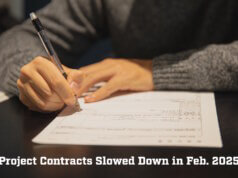
Executive Director
Solitaire Group
It’s due to increasing migration to the cities that urbanisation has become an urgent requirement and hence we are witnessing growing real estate demand from all over, including tier-II and tier-III cities of India.
With rapid land and infrastructure development in smaller cities and towns, higher earnings and improved standards of living, demand for housing and construction is constantly increasing. Even smaller towns are experiencing a boom in real estate. All this reflects a healthy trend and positive outlook for both real estate and infrastructure sectors in India.
As per an estimate, the country’s urban population is expected to soar to 590 million by 2030 and hence it is urgently required for heavy investment in the next 20 years over modernisation of urban infrastructure. This growing demand can be considered as a healthy sign, but everyday rising input costs is hampering the growth of real estate sector in India.
Even though real estate has been affected by high inflation, still it has been far better than gold or stock markets. This may be one of the reasons why Indian construction and real estate sector continues to be a favoured destination for global investors also.
Foreign investment
Several large global investors have already partnered with local investors and some of the developers for investing in the Indian real estate market. This is expected to result in high transaction activity in realty and infrastructure in the coming months and years, especially in residential real estate segment. Private equity players are also finding the real estate in India an excellent investment opportunity as the returns have been excellent in the last few years. They opine, “It pays to buy property in India and keep it for some time for investment purposes. And the returns can be seen in just a couple of years.”
Lately, the real estate sector in India has also witnessed increased recognition as an infrastructure service that is driving the economic growth of the country, but still its concerns are not being paid attention properly. For example, real estate developers today are struggling with the rising price of land, labour and input costs, besides high burden of taxation, high cost of project funding, and delays in getting various clearances and approvals.
As per the latest report of the Ministry of Housing and Urban Poverty Alleviation, the existing housing shortage is estimated at 18.78 million dwelling units and this situation calls for an overall structured and massive housing programme. In fact, we urgently require to restructure our overall approach, so that we can meet this target and the sector can contribute significantly to the Indian economy.
Infra spending
Need of the hour is to create simple and effective polices to ease real estate approval procedures. For this purpose, facility of single window clearance should be activated as soon as possible. Further, more and more infrastructure spending is required in urban areas, so that world-class real estate projects can be developed in the country at affordable costs. Also, this should be followed by favourable RBI policies in terms of easing the repo rates and relaxing CRR, SLR etc. This step will inject liquidity into the real estate sector which is struggling since long.
Fundamental industry drivers such as lower interest rates, infrastructure development, and the renewed interest of international investors in real estate can ensure a positive outlook for the real estate and infrastructure over the next couple of years.
Already, investment of private equity funds has risen significantly during the last three years for investment in the whole infrastructure sector. Foreign investors are also looking at investing in small, medium to large projects across India with the changing economic scenario. All this reflects a healthy trend and positive outlook for the country.











